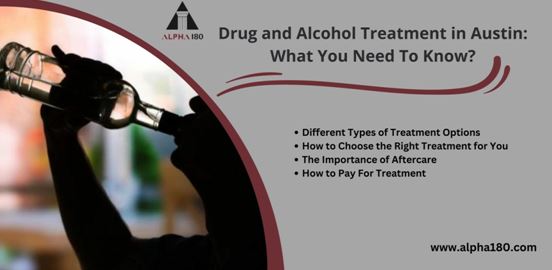Drug and Alcohol Treatment in Austin: What You Need To Know?

When it comes to overcoming substance abuse, seeking help is crucial. And fortunately, Austin has a wide variety of treatment options to choose from.
Whether you’re interested in sober living homes, an intensive outpatient program, or a Transitional Living Program in Austin, there’s something out there for everyone.
As there are so many options, deciding the right one can be difficult.
Here’s what you need to know about Drug and Alcohol Treatment in Austin to make the best decision for your recovery.
Different Types of Treatment Options
There are several types of treatment options available in Austin, each with its own benefits and drawbacks. Here are a few to consider:
Inpatient rehab: This type of treatment involves living at a treatment center full-time while receiving round-the-clock care and support. Those who are looking for a more structured and intensive program, or for those who need a break from their daily lives to focus solely on recovery.
Outpatient rehab: Outpatient rehab involves attending treatment sessions a few times a week while continuing to live at home. It’s a good option for those who have a strong support system at home, or for those who require a more flexible schedule.
Partial hospitalization programs: This type of treatment is similar to outpatient rehab, but the sessions are more frequent and structured. This is a good option for people who require more support than outpatient rehab but don’t need the full-time structure of inpatient rehab.
Sober living homes: Sober living homes provide a sober and supportive living environment for those in recovery. They’re a good option for those who require a structured living situation but don’t need the intensity of inpatient rehab.
12-step programs: 12-step programs, like Alcoholics Anonymous and Narcotics Anonymous, provide support and accountability for those in recovery. They’re a good option for those who require a more structured and community-based approach to recovery.
How to Choose the Right Treatment for You
Choosing from so many options can be confusing. Consider these factors when making your decision:
Consider your specific needs and goals:
< Why are you seeking treatment?
< Do you need a more structured program, or do you need something more flexible?
< Do you need a break from your daily life, or do you have a strong support system at home?
- You can narrow down your options by answering these questions.
- Research different treatment centers and their philosophies: Different treatment centers have different approaches to recovery. Some may be more focused on traditional 12-step programs, while others may take a more holistic approach. Researching the different philosophies of different treatment centers can help you find one that aligns with your own beliefs and values.
- Talk to a medical professional or addiction specialist: If you’re still unsure which option is right for you, talking to a medical professional or addiction specialist can be helpful. They can provide more information on the different treatment options and help you make the best decision for your specific needs.
The Importance of Aftercare
While treatment is an important step in recovery, it’s not the only step. Aftercare, or continuing support after treatment, is crucial for maintaining long-term recovery. Here are a few options for aftercare to consider:
- Sober living homes: As mentioned above, Sober Living homes Austin provide a structured and sober living environment for those in recovery. They can be a helpful option for those who require a transition period between treatment and returning to their daily lives.
- Support groups: Support groups, like 12-step programs, can provide ongoing support and accountability for those in recovery. They can be a helpful option for those who require ongoing community and support to maintain their recovery.
- Individual therapy: Individual therapy can help those in recovery work through any underlying issues that may have contributed to their substance abuse. It can be a helpful option for those who need more personalized support and guidance.
How to Pay For Treatment
Paying for treatment can be a concern for many seeking help for substance abuse. However, there are several options available to help cover the cost.
- Insurance coverage: Many insurance plans cover substance abuse treatment, so it’s worth checking with your insurance provider to see what options are available to you.
- Grants and loans: Some treatment centers offer grants or loans to help cover the cost of treatment. It’s worth reaching out to the treatment center to see what options are available.
- Fundraising: Some people choose to fundraise to help cover the cost of treatment. This can be done through online platforms or through community fundraising events.
Conclusion
Seeking help for substance abuse is a crucial step in the journey to recovery. And fortunately, Austin has a wide variety of treatment options to decide from.
Remember, recovery is possible and worth the effort – take the first step and seek help today.